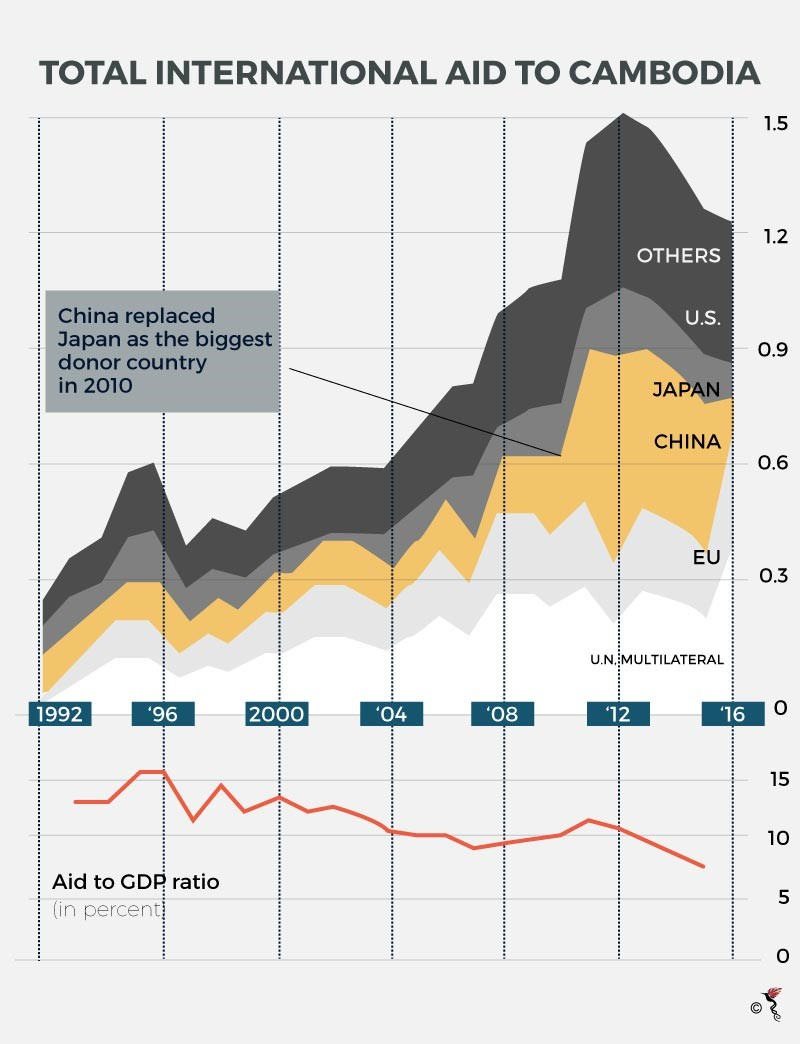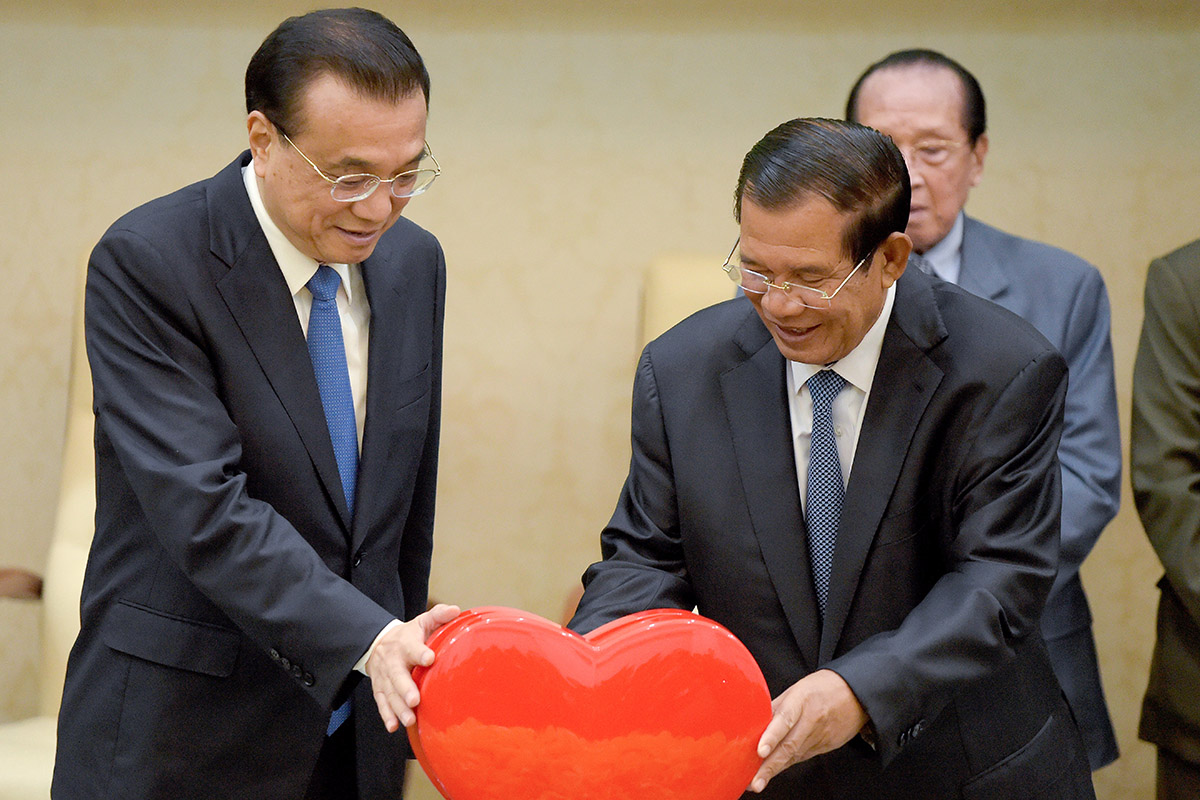Cambodia and China recently marked 60 years of ties of joint cooperation with a visit by Chinese Premier Li Keqiang to Phnom Penh. Both countries signed a series of 19 bilateral agreements providing for Chinese investments into Cambodia’s infrastructure, healthcare and agriculture sectors, among others.
The two countries go back a long way, beginning when Cambodia chose to acknowledge China’s legitimacy over Taiwan’s when the latter claimed independent statehood. In 1997, China provided Cambodia with US$2.8 million to help boost the Cambodian military. In1999, China gave a US$200 million interest-free loan. It also pledged US$18.3 million in financial aid to Prime Minister Hun Sen, who made a diplomatic visit to China that year.
Most of this financial aid has gone into developing Cambodia’s economy. Between 2011 and 2015, some of this aid, totalling US$4.9 billion was channelled into investments. One of the resulting projects the One Park project, which concerned the construction of a commercial and residential complex spearheaded by Beijing-based developer Graticity Real Estate Development.
Over the past 10 years, China also invested US$2.4 billion into building Cambodia’s power grid structure. This includes the construction of seven hydropower plants, increasing national electricity supply from 180MW in 2002 to 2,000MW in 2016. Separately, it has also helped develop Cambodia’s rice and sugar industries by buying more rice from its farmers while investing US$360 million into building a sugar mill.
Under the latest bilateral agreements, China will help develop a US$2 billion expressway connecting Phnom Penh and Sihanoukville. It is also providing financing for two new international airports in Phnom Penh and Siam Reap and the construction of new transmission lines between power grids in Cambodia and Laos. The construction of these new airports is expected to grow the tourism industry by 2020 to US$5 million in revenue.
Cambodia is comfortable with the fact that most of this financial aid comes from China on a ‘no-strings-attached’ basis.
Cambodia has been wary of the perceived threats coming from Thailand and Vietnam for years, and sees this as a threat to its national security. China has tried to ease this fear by supplying Cambodia with protection with providing it with military supplies.
Meanwhile China has an ally in Cambodia when it comes to support for its policies amongst its (China’s) ASEAN peers. In particular, Cambodia’s support for China’s territorial South China Sea claims
Unfortunately, Cambodia risks potential alienation of other countries with which Cambodia also has ties, including the United States and Japan.

Source: Nikkei Asian Review
China and Cambodia have a similar stance towards human rights and press freedoms.
While Cambodia has effectively shut down pro-Western media outlets like Cambodia Daily, and removed Voice of America, Radio Free Asia and Voice of Democracy from the airwaves pro-China media outlets have been to enter instead.
Beyond the political landscape, allowing Chinese interests too much free reign could also put Cambodia’s environment on the sacrificial block. Currently the construction of hydropower dams along the Mekong river have drawn the ire of civil society groups in particular.
Similar issues surround land development Chinese companies development for the purpose of planting rubber, sugar and other commodities. One such example is how the setting up of a sugarcane plantation in Cambodia’s Preah Vihear province, was projected to include the construction of a powerplant, fertilizer factory, school, and hospital on over 9,000 hectares of land. Though aiming to provide 14,000 jobs once completed, the project has already cost the livelihoods of locals whose farmlands were razed to make way for the plantation.
While it cannot be denied that Cambodia’s economy faces uncertainty due to the fact of China’s growing influence, Cambodia needs to find balance to ensure it remains in control of its own economic future.
Recommended stories:
